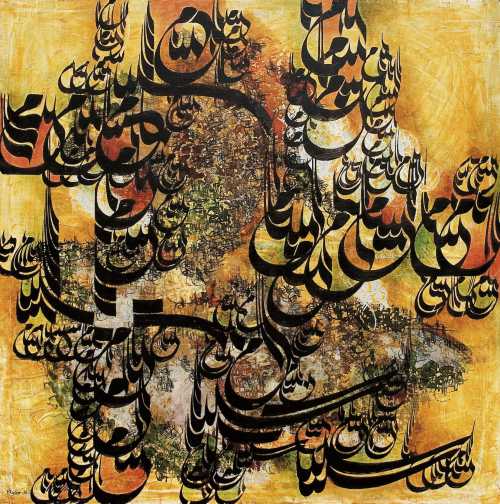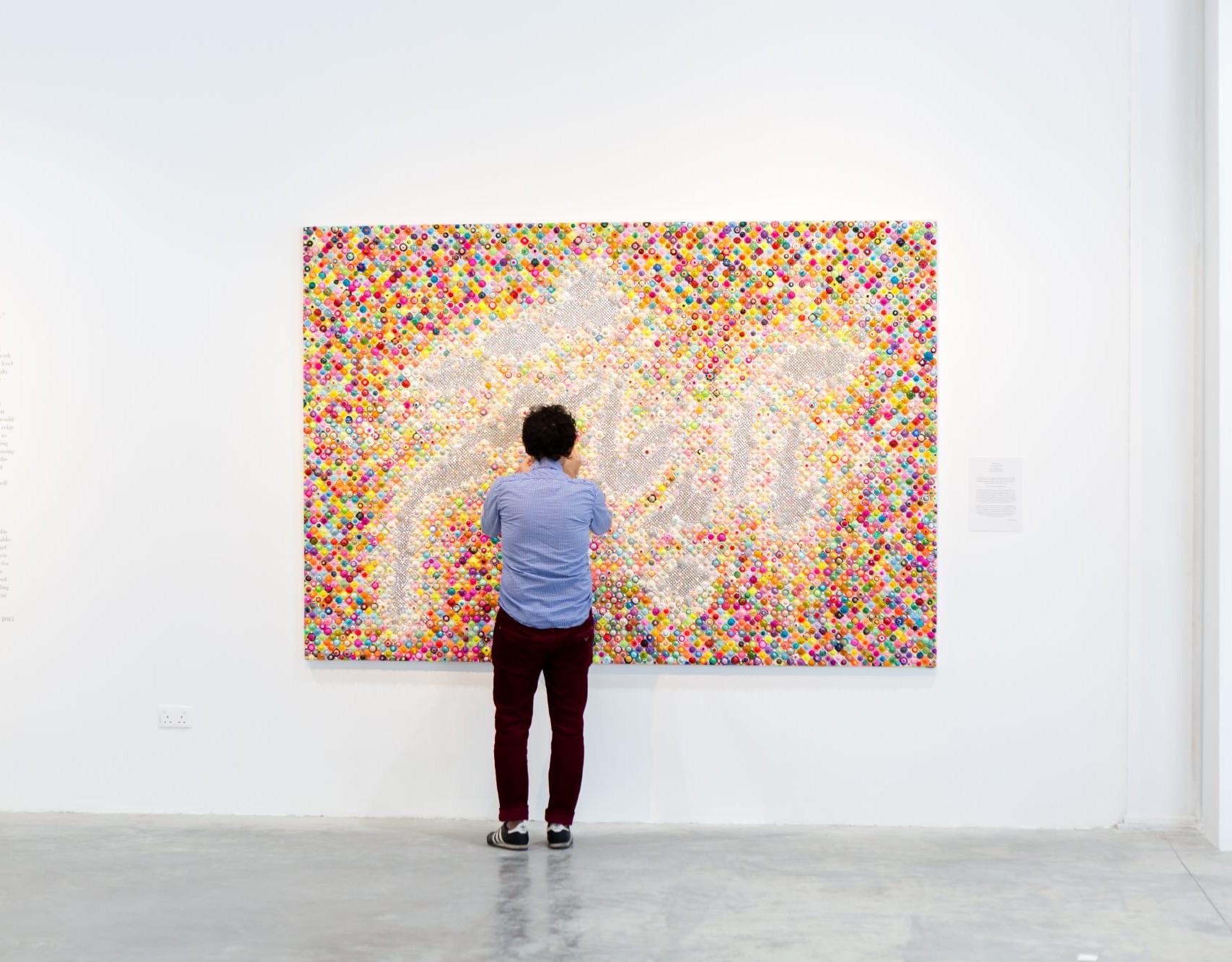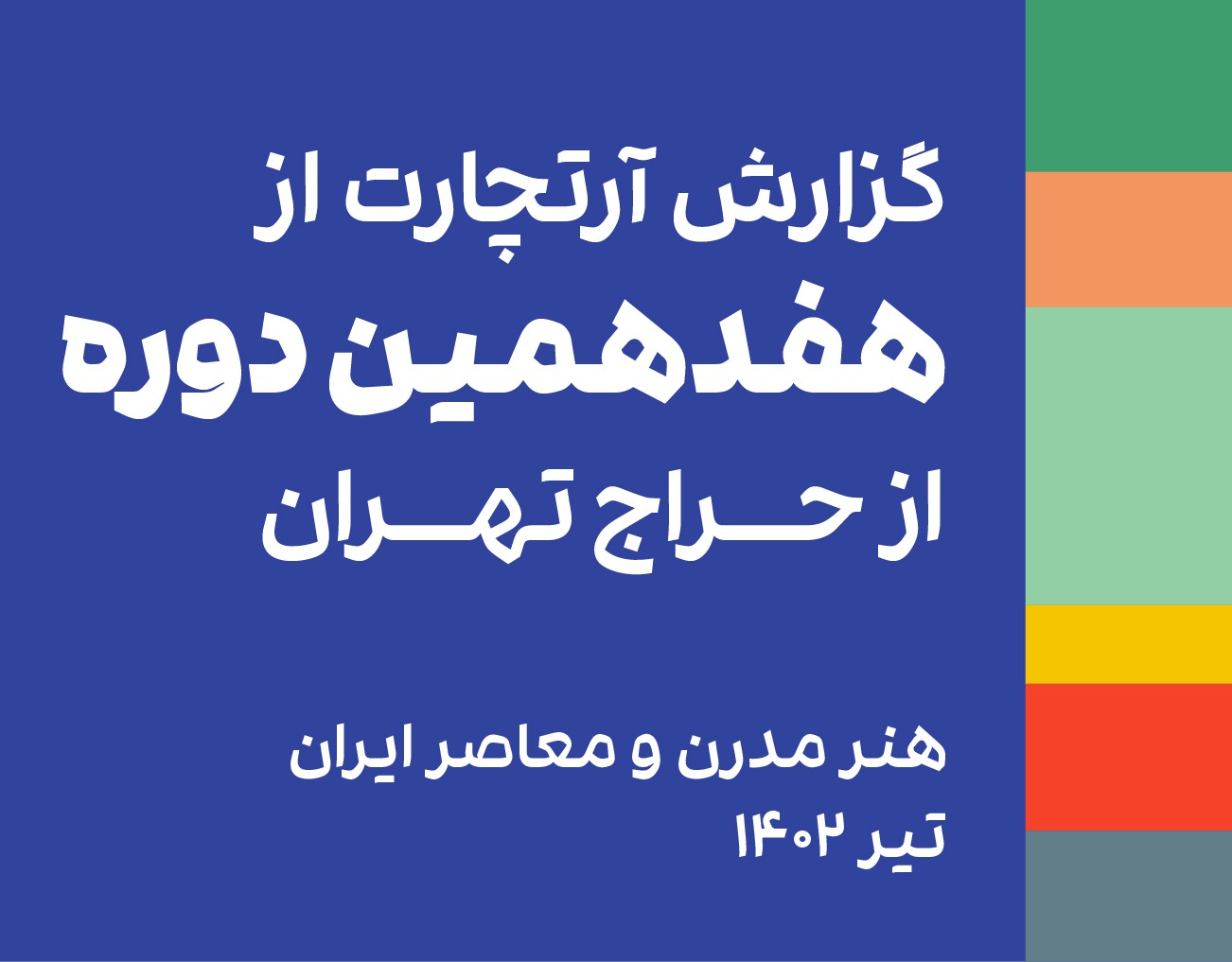About Faramarz Pilaram
Faramarz Pilaram is an Iranian modernist artist and one of the founders of the Sagha Khaneh movement and is known for his calligraphic paintings. He graduated from conservatory of fine arts in 1961 and continued his education in the faculty of decorative arts in Tehran university. In 1968 he graduated with a master degree in interior design and decorative painting. 2 years later he moved to France to study lithography and printing. He co-founded the Iran Hall (Ghandriz Hall) with others and along with several other artists they started the Sagha Khaneh movement in 1962. In 1974, Pilaram, with the help of artists such as Morteza Momayez, Marco Gregorian, Gholam Hossein Naami and others founded "free group". During 4 years of being a member of this group heheld several exhibitions along Iranian painters in different cities of the world and introduced modern Iranian art. Pilaram's first appearance in auctions dates back to June 2006 at Christie's Auction House.
Pilaram's name is bound with neotraditionalism art style in Iranian art, which means calligraphic painting, and the Sagha Khaneh movement. He was constantly seeking to take advantage of popular, national and religious symbols. In this regard, in the early period of his career, using the sealing technique, he applied religious motifs such as "Alam" and "panjeh" on the canvas. But in the continuation of the artistic path, he turned to calligraphic painting and devoted himself to this style. Pilaram was one of the first artists to examine the formal possibilities of traditional calligraphy and calligraphic painting and to incorporate calligraphy into his work with a painting viewpoint. The cohesive texture created by combining letters and words and mixing them with opposite colors is the most important feature of Pilaram’s calligraphic painting. Pakbaz writes about the second period of Pilaram's career: "he turned to calligraphy particularly to Nastaliq and Shekasteh. Using the traditional pattern called "Siyah Mashq" he gained various experiences.These experiments included a variety of geometric compositions with writing texture, calligraphic designs, colourful "Siyah Mashq" and rhythms of embossed and overlapping letters."
Describing the place of the line in his works he writes: "I go so far beyond the line that the picture in my canvas is no longer calligraphy and the general attributes of the calligraphy vanish, but that does not mean that I have damaged the calligraphy. That means I have created another realm of calligraphy for myself."
Pilaram's name is bound with neotraditionalism art style in Iranian art, which means calligraphic painting, and the Sagha Khaneh movement. He was constantly seeking to take advantage of popular, national and religious symbols. In this regard, in the early period of his career, using the sealing technique, he applied religious motifs such as "Alam" and "panjeh" on the canvas. But in the continuation of the artistic path, he turned to calligraphic painting and devoted himself to this style. Pilaram was one of the first artists to examine the formal possibilities of traditional calligraphy and calligraphic painting and to incorporate calligraphy into his work with a painting viewpoint. The cohesive texture created by combining letters and words and mixing them with opposite colors is the most important feature of Pilaram’s calligraphic painting. Pakbaz writes about the second period of Pilaram's career: "he turned to calligraphy particularly to Nastaliq and Shekasteh. Using the traditional pattern called "Siyah Mashq" he gained various experiences.These experiments included a variety of geometric compositions with writing texture, calligraphic designs, colourful "Siyah Mashq" and rhythms of embossed and overlapping letters."
Describing the place of the line in his works he writes: "I go so far beyond the line that the picture in my canvas is no longer calligraphy and the general attributes of the calligraphy vanish, but that does not mean that I have damaged the calligraphy. That means I have created another realm of calligraphy for myself."
The Most Expensive Artwork
At Auctions
First Attendance
24 May 2006
# Attendance
56
# Artworks
88
Average Realized Price
55,244 USD
Average Min Estimate
35,420 USD
Average Max Estimate
48,182 USD
Sell-through Rate
65.116%
Average Growth of Artwork Worth
56.94%
Timeline
Fine Art auction
30 November
Modern & Contemporary Middle Eastern Art auction
25 November
Continuum: The Unbroken Line of Persian Art exhibition
2 November
Artibition Auction - October 2025 auction
7 October
Charsoo exhibition
5 September
Post-War & Contemporary Art auction
5 June
In white exhibition
18 April
Shadow exhibition
18 April
On the Path of Iranian Art History exhibition
4 April
The 22nd Tehran - Modern, Classic and Traditional Iranian Art auction
14 February
The 13th Art Expo of Several Generations of Iranian Contemporary Artists exhibition
7 February
The 21st Tehran - Contemporary Iranian Art auction
11 October
Saqqakhaneh, the Birth of a Dream exhibition
13 September
Gargas exhibition
23 August
A Collection exhibition
10 May
Connoisseur's Look exhibition
19 April
The Range of Meaning exhibition
1 March
Party of colors exhibition
16 February
The 19th Tehran -Classic and Modern Iranian Art auction
24 January
The 17th Tehran Modern and Contemporary Iranian Art auction
18 July
Collector exhibition
15 February
Selected 6 exhibition
16 September
The 15th Tehran- Modern Iranian Art auction
14 January
Sculptures - Contemporary art - African art auction
2 December
The Mana Jalalian Collection: A Rare Collection of Iranian Modern Art exhibition
15 November
Middle Eastern 20th and 21st Century Art auction
20 October
Har Dam Az In Baagh exhibition
2 July
Small Artworks collection exhibition
11 June
Souvenir exhibition
2 February
20th Century Art / Middle East auction
20 October
One by One exhibition
3 July
No.3 auction
23 April
20th Century Art / Middle East auction
24 March
دوازدهمین دوره حراج تهران auction
17 January
White Black Gray exhibition
13 December
Modern and Contemporary Middle Eastern Art auction
1 May
دهمین دوره حراج تهران auction
11 January
The 9th Tehran- Classic and Modern Iranian Art auction
29 June
+۹۶ exhibition
16 February
Modern and Contemporary Middle Eastern Art auction
28 November
POST WAR & ART CONTEMPORAIN auction
20 November
Middle Eastern, Modern and Contemporary Art auction
25 October
work and painting exhibition
11 August
POST WAR & ART CONTEMPORAIN auction
23 June
Modern & Contemporary Art auction
18 March
Modern & Contemporary Art auction
18 October
Dubai: Modern and Contemporary Art Now and Then auction
16 March
Art Abstrait et Contemporain auction
4 December
Faramarz Pilaram calligraphy painting Exhibition exhibition
6 November
Drouot Richelieu, Salle 1, Tableaux Abstraits & Contemporains auction
12 June
Islamic and Indian Art auction
7 October
Islamic and Indian Art auction
9 June
Modern and Contemporary Arab,Iranian and Turkish Art Part II auction
30 October
Islamic and Indian Art auction
23 April
Modern and Contemporary Arab,Iranian and Turkish Art Part I auction
16 April
Design, Objects of Art and Mobilier auction
24 November
اولین دوره حراج تهران auction
22 May
Visions d'Orient - De l'orientalisme à l'art contemporain auction
4 November
Modern and Contemporary Arab, Iranian and Turkish Art Part II auction
26 October
Contemporary Art / Arab & Iranian auction
4 October
Hurouf: The Art of the Word auction
16 December
Contemporary Art / Arab & Iranian auction
20 October
Modern & Contemporary Middle Eastern & South Asian Art auction
11 October
Modern & Contemporary Middle Eastern & South Asian Art auction
12 October
Tableaux Orientalistes et Art Moderne Arabe et Iranien auction
16 June
Modern & Contemporary Middle Eastern & South Asian Art auction
3 June
International Modern & Contemporary Art auction
29 April
Tableaux Orientalistes et Art Moderne Arabe et Iranien auction
17 December
Modern & Contemporary Arab, Iranian, Indian & Pakistani Art auction
24 November
International Modern and Contemporary Art auction
30 October
Modern and Contemporary Arab and Iranian Art auction
23 October
Tableaux Orientalistes et Art Moderne Arabe et Iranien auction
3 June
International Modern and Contemporary Art auction
30 April
International Modern and Contemporary Art auction
31 October
International Modern & Contemporary Art auction
24 May
Articles
Iranian Art Market Report for 1402 SH (2023-2024) 20 April 2024
Artchart, which had previously examined the Iranian Art Market in 1401 SH (2022-2023), has once again provided an in-depth report for 1402 SH (2023-2024). The forthcoming report will analyze the data collected in 1402 SH and compare it to previous years to illustrate the current state and trends within the Iranian art market. The initial section provides an overview of the mos...
Market of Iranian Neo-calligraphers 15 August 2023
Neo-calligraphic style entered the modern Iranian art movement in 1964 with the efforts of the pioneers of the Saqakhaneh movement, namely Hossein Zenderoodi, Parviz Tanavoli and Faramarz Pilaram. From this movement, later, a trend called Calligraphy-Painting branched out, which, to some extent, adhered to the rules and style of traditional calligraphy. Since the the 2000s, with the...
۱7th Tehran Auction Sales Report 26 July 2023
The 17th Tehran auction: modern and contemporary, was held on Friday July 21st, 2023 at Parsian Azadi Hotel. This auction achieved a total sale of 214 billion tomans equivalent to 4.3 million dollars, which was a growth of 77.8% compared to the previous period. Artchart has observed the 17th Tehran auction in the upcoming report.



